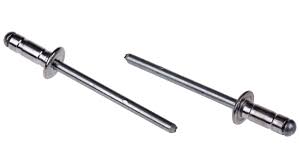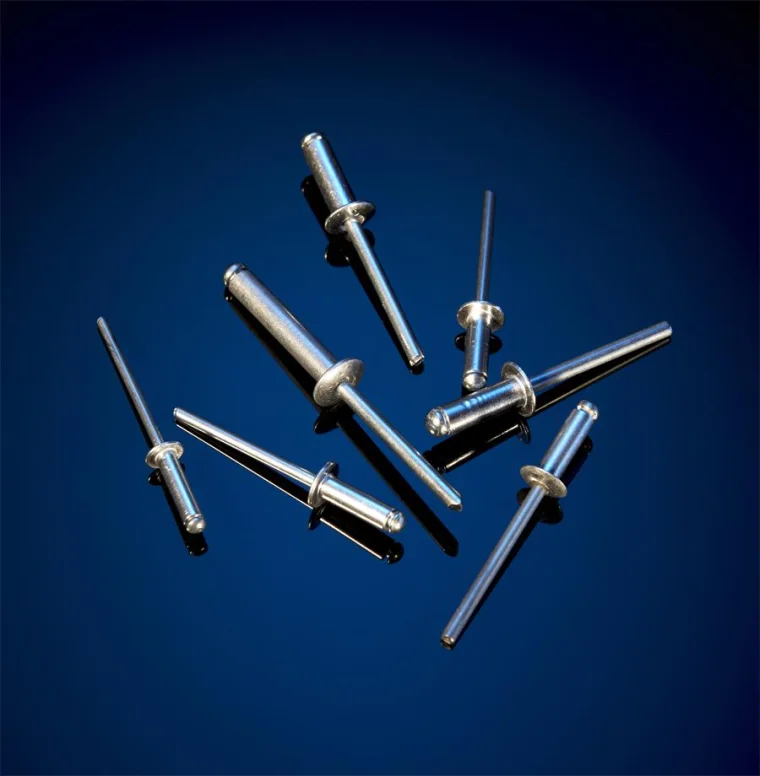Blind rivets, also known as pop rivets, are versatile fasteners commonly used in various industries and applications. They provide a secure and efficient way to join materials together when access to the backside of the workpiece is limited. In this guide, we will walk you through the process of correctly installing blind rivets. By following these steps, you can ensure a reliable and strong connection. As a trusted provider of fastening solutions, TianFang is committed to sharing industry knowledge to help you achieve successful installations.
I. Understanding Blind Rivets
Before diving into the installation process, it is essential to understand the components and types of blind rivets:
1.1. Components:
Rivet Body: The main part of the blind rivet, consisting of a cylindrical shaft and a hollow portion.
Mandrel: A rod-like component inserted into the rivet body during installation. It breaks off after installation, creating a secure connection.
Head: The part of the rivet that remains visible after installation. It provides a finished appearance and distributes the load.
1.2. Types of Blind Rivets:
Open-End Rivets: These rivets have an open end that forms a large flange on the blind side, suitable for applications with lower strength requirements.
Closed-End Rivets: Closed-end rivets have a sealed end, preventing the passage of liquids or gases through the rivet, making them suitable for applications requiring a watertight seal.
Multi-Grip Rivets: These rivets have a unique design that allows them to accommodate a range of grip ranges, providing flexibility in joining materials of varying thicknesses.

II. Tools and Materials Required
Before starting the installation process, gather the necessary tools and materials:
2.1. Tools:
Rivet Gun: A tool used to install blind rivets. It applies force to secure the rivet in place.
Drill or Hole Punch: To create the appropriate hole size for the rivet.
Deburring Tool: Used to remove any burrs or sharp edges around the hole.
2.2. Materials:
Blind Rivets: Choose the appropriate type and size of blind rivet based on the materials and thicknesses being joined.
Workpiece: The materials being fastened together.
Protective Equipment: Safety glasses and gloves to ensure personal safety during the installation process.
III. Step-by-Step Installation Process
Follow these steps to correctly install blind rivets:
3.1. Prepare the Workpiece:
Ensure the materials to be joined are properly aligned and positioned.
If necessary, use a drill or hole punch to create a hole of the appropriate size for the rivet. The hole diameter should match the rivet size.
3.2. Insert the Rivet:
Insert the rivet into the pre-drilled or punched hole in the workpiece, ensuring that the rivet head is on the side where it will remain visible after installation (the "blind" side).
Make sure the mandrel of the rivet is fully inserted into the rivet body.
3.3. Position the Rivet Gun:
Place the nosepiece of the rivet gun over the mandrel of the rivet. Ensure a secure and centered grip.
3.4. Apply Pressure:
Squeeze the handles of the rivet gun to apply pressure. This action pulls the mandrel, deforming the blind end of the rivet and expanding the opposite end, creating a secure connection.
Continue applying pressure until you hear a distinct "pop" sound, indicating that the mandrel has broken off.
3.5. Inspect the Connection:
After installation, visually inspect the connection to ensure that the rivet is properly set and the materials are securely joined.
Check the rivet head for flushness with the workpiece surface. If necessary, use a rivet set tool to properly set the head.

IV. Tips for Successful Installations
Consider the following tips to ensure successful blind rivet installations:
4.1. Rivet Selection: Choose the appropriate type, size, and material of blind rivet based on the specific application requirements, including material thickness and load-bearing capacity.
4.2. Hole Preparation: Ensure that the hole is clean, free of burrs, and properly aligned with the rivet. A deburring tool can be used to remove any sharp edges that may affect the installation process.
4.3. Proper Grip Range: Determine the appropriate grip range for the rivet based on the thickness of the materials being joined. Select a rivet with a grip range that matches the combined thickness of the workpieces.

Conclusion
Blind rivets are reliable, efficient fasteners used in a variety of industries and applications. Help you install blind rivets safely by following the step-by-step installation guide provided above.
Shanghai Tianfang Fasteners Co., Ltd. is a company specializing in the production and sales of fasteners and various stamping products. Our company has passed and obtained ISO9000-2000 quality system certification to ensure that the quality of our products meets international standards. Our products are exported to Europe, America, Southeast Asia, the Middle East and other countries, and have won the trust and praise of customers. In order to meet market demand, we will continue to work hard to develop new products such as non-standard fasteners, provide more diversified choices, and meet the specific needs of customers. We are committed to providing high-quality products and comprehensive solutions with a professional and efficient service attitude.
If you are interested in our products,welcome to contact us.
E-mail:luluwu.tf@foxmail.com
TianFang Fastener
luluwu.tf@foxmail.com
